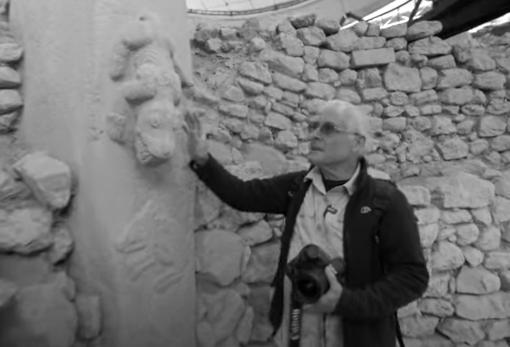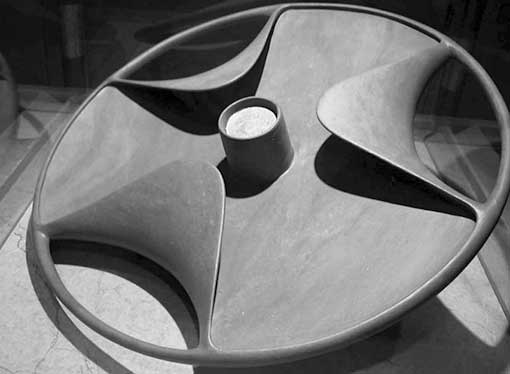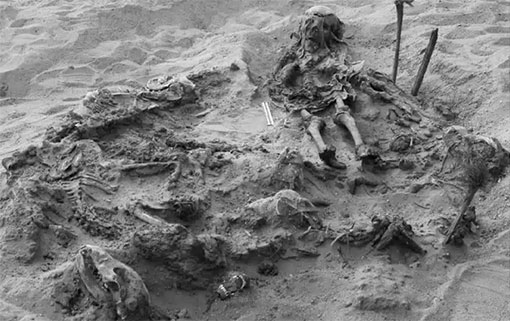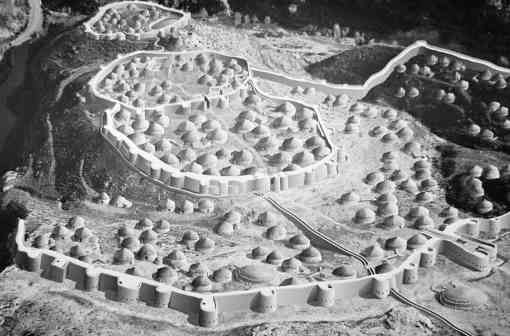I wasn’t looking for that skeleton, I was looking for THIS skeleton

There was a headline in New Scientist about a curious skeleton found in a Roman graveyard in Belgium. It seemed unremarkable, until they tested the bones:
Laid to rest on the right side with tucked-up legs, the remains feature long bones from seven unrelated Stone Age men and women – of varying ages and separated by several centuries – and the skull of a Roman woman who died…
Unfortunately, New Scientist is behind a paywall and that’s where the article cut off. I was sure I could find the same info at an archaeology site, but I have been unsuccessful. In the course of Googling, I ran across yesterday’s skeleton – and lot of others beside. Dear me there are a lot of bones in Europe.
Local councils end up with boxes of the things. They’re required to have an archaeologist on construction sites to collect anything interesting. Bones end up in storage and seldom get revisited. On the rare occasion they are, odd things come to light.
There was one report I read that turned up a similar skeleton made up from the ancient bones of multiple individuals – except all the bones had tiny holes drilled in them. The obvious purpose being to string them together and hang them up.
I doubt it’s ancestor worship, if they couldn’t be bothered to keep the bones of various ancestors separate. To scare the kids on Halloween? And why would you Frankenstein together a skeleton from eight different people and then bury it?
Our ancestors baffle me.
November 5, 2024 — 8:15 pm
Comments: 4
The ancestors were weird

YAVB (yet another vampire burial). This one had a sickle buried over her throat business side down so she’d decapitate herself if she sat up. Spoiler: she didn’t.
Also, she had a padlock around her big toe. There’s a bit of vampire lore I didn’t know.
She was eighteen. She had a wonky front tooth, which might have contributed to her identification as a blood sucker. She also had a tumor under her breast bone that might have caused her to look weird, faint a lot and bleed randomly, which couldn’t have helped her reputation. Probably killed her.
She was found in a Polish graveyard but she was Scandihoovian. This was during a 17th C war between Poland and Sweden, so maybe that had something to do with it. It was also the century of Peak Vampire.
She was in a graveyard with 100 unmarked burials, 30 of which had bodies restrained in some way. This is now called the Field of Vampires, because Sky History is doing a two-part special and it sounds sexy.
I had to take minutes for two meetings today and I’m feeling crispy and put-upon.
November 4, 2024 — 6:18 pm
Comments: 11
Mark your calendar

The next lecture at the Prehistoric Society will be streamed on YouTube, and it looks like anyone can join. I can’t tell you how much I enjoyed these lectures during lockdown, but the professionals couldn’t wait to go back to meeting in person (it’s a small world, and they all know each other). Looks like membership complained, because this one is in person but broadcast, too.
Anyhoo, this one is called “Into the woods: new methods for studying Palaeolithic organic technologies” (button for the lecture is at the link, but I think it’s just their regular YouTube channel). It’s October 16 at 5:00 GMT (noon EST).
Not a lot of paleolithic wood survives, of course, but sometimes conditions are just right. They’re going to be talking about stuff like a 400,000-year-old yew spear from Clacton on Sea, and a whole 300,000-year-old settlement in Schöningen Germany.
You’d be amazed at the things they’re uncovering about really ancient artifacts. One lecture I remember vividly analyzed fingerprints in ceramics. By analyzing the size of the prints, they could work out that the rough clay troughs for drying seawater into salt were made by adult men. But the food vessels were made by women, who then encouraged a variety of children to press a thumb into the clay. You can make up whatever story you like about that!
It’s a really weird period in archeology. New technologies (and plain good observation, like the clay pot study above) are uncovering an astonishing wealth of new data about prehistory. Alongside this good clean science, actual archeologists are spinning highly fanciful interpretations.
I hate to point it out, but the majority of doctors of archeology are now women. They’re forever trying to paint our ancestors as a peaceful matriarchy (just ignore the tooth marks on that thighbone).
Have a good weekend, everyone!
September 6, 2024 — 7:03 pm
Comments: 4
Pet the doggy

It’s been a while since we checked in with the Prehistory Guys, but we were bored this afternoon and it turns out they have a project at Göbekli Tepe. Link goes to a whole playlist of short films about it.
Super interesting stuff. This is 10,000 years ago, just at the end of the last ice age, and they had cisterns for storing water and pipes capped with limestone moving the water around the complex.
They still think the builders were nomadic hunter-gatherers, even after finding this gigantic stone complex. As of 2021, only 5% of the known site has been excavated.
Did I tell you I bumped into one of the Prehistory Guys in town? Not surprisingly, he was at a historic attraction. I gave him the side-eye for the longest time, before sidling over and blurting out, “hey, you’re that YouTube guy, aren’t you?”
Then it got super awkward. A big fan would’ve known his name. After a few minutes scraping my toe on the pavement and clearing my throat, I slunk off.
Michael Bott is his name.
We kind of went off the channel because they spend way too much time photographing each other staring at the really cool thing. Oi! You! Show me the really cool thing.
I gave up on Cosmos for the same reason. Thirteen hours of Carl Sagan making the “ooo!” face.
May 21, 2024 — 6:58 pm
Comments: 4
More moo

We went back to visit the moo cows today. You know, the farm shop with the milk vending machine.
Milk vending machines since have become something of a thing locally. Hippies!
Changing the subject – by a real lot – did you know they think they’ve found Sodom? An archeologist working on a site called Tall el-Hammam came upon a layer of weirdly burned roofs and melted stuff and said to himself say, this looks a whole lot like the wrath of God.
“The proposed airburst was larger than the 1908 explosion over Tunguska, Russia, where a 50-m-wide bolide” — a meteor that explodes in midair — “detonated with 1000× more energy than the Hiroshima atomic bomb.”
[…]
What was unlike destruction caused by earthquakes or warfare were pottery shards with their outer surfaces melted into glass, some bubbled as if boiled, “bubbled” and melted building brick and plaster, suggesting some unknown high-temperature event. Objects of daily life, carbonized pieces of wooden beams, charred grain, bones and limestone cobbles were burned to a chalklike consistency.
Other scientists have rubbished it, of course. They think he just dug up an ordinary smelter and flipped. The archeologist is from a Bible college, apparently.
When I went hiking in Exeter, Rhode Island, I often passed a residential road called Sodom Trail. I never dared go up it.
July 12, 2023 — 5:39 pm
Comments: 8
Obviously, a cheese platter

Actually, no. I have no idea what this is. It’s called the Schist Disk or the Disc of Sabu.
It was found in in 1936 by Egyptologist Brian Walter Emery in the tomb of Prince Sabu, son of Adjuib Pharaoh, governor of the First Dynasty. That was, like, 5,000 years ago. It’s made of schist, a metamorphic rock that’s shaped over time in linear layers (it can be split along those lines, hence the name).
Schist is described as hard but brittle, so probably not a wheel. This thing is about two feet wide, and nobody can work out how the hell they made it. It’s not an unusual material and not absolutely unique in shape, but it would have been extremely difficult to work with this precision with the tools they had.
To give you an idea of the era we’re talking, there were also flint knives in the tomb.
I think it was made in some kind of grinding or sanding action, but it’s awfully precise. I wondered if it made a sound when spun around. This guy thinks it was an incense burner. This is the original link, gived my by Uncle B.
And yes, Lavendergirl takes it with Tom Sizemore. See you back here Friday! Or before. You can come before, you just can’t pick anyone in the Dead Pool.
March 7, 2023 — 8:24 pm
Comments: 11
This a weird one

Photo by the Center for Egyptological Research of the Russian Academy of Sciences, or CER RAS, who conducted the dig.
What you’re looking at is a pile of dead dogs with a child on top. The 8-year-old – sex is near impossible to determine at this age – was buried on a pile of 142 dogs. All died at the same time; no evidence of violence.
But wait! There’s more! The child was buried with a linen bag over its head.
The necropolis is in Faiyum Oasis, about 60 miles southwest of Cairo, and had burials in it for 1,100 years. Earliest so far is 400 BC. They have uncovered one other corpse with a bag over its head, and he was apparently executed (arrow to the chest).
The only clue, bits of blue clay were found around the dogs. Similar to stuff they find in Egyptian reservoirs.
So my guess is, the child was minding a pack of dogs. The Egyptians used dogs for hunting. And then something – a flash flood, little Timmy down a well? – and they all drowned together. As for the linen bag, though, I haven’t a theory.
January 17, 2023 — 6:10 pm
Comments: 4

I’m sure you’ve seen this: they finally discovered the wreck of Shackleton’s ship Endurance this week, 107 years after it went down and four miles from its last recorded location (hence the time it took to find it).
I hoped to link to a definitive article with lots of good pictures, but it’s honestly more interesting to do a Google Images search of “endurance ship” because it turns up so many great pictures of her before she sank.
This video of the wreck itself is amazing. She went down in water so cold that wood-eating beasties can’t survive, hence the astonishing state of preservation.
I’d also like to link to his Britannica entry because it has audio of him talking about his adventures, recorded in 1910. Early audio recordings are so spooky.
Lumme a good creepy shipwreck. Have a great weekend, everyone!
March 11, 2022 — 8:23 pm
Comments: 4
Racton Man!

Dude looks like he’s fixing to give that spine a smooch, doesn’t he?
The skeleton is Racton Man, buried 4,000 years ago near Racton in West Sussex. Another win for the detectorists, who turned up his dagger and the rivets from its handle first. He was holding it in both hands in front of his face.
One article I read said the dagger was the oldest bronze object ever found in Britain, so high status guy. He was six foot tall, heavily built and over 45. He died with unhealed cuts on his upper arm bones, so probably in a fight.
He also had spinal degeneration (probably age-related), a chronic sinus infection and tooth decay. I wonder what he used to treat those things.
He was found in the Eighties, but they’ve only fairly recently got grant money to do the isotope analysis, etc. You’d be amazed how much of this stuff is dug up and stored in a local councils warehouse and only years or decades later do they scrape up enough funding to do the fun a part.
November 2, 2021 — 8:31 pm
Comments: 3
Copperstone?

Just finished attending the Prehistoric Society’s AGM and waiting for the lecture to begin. Lecture topic: Genetic change and relatedness in Chalcolithic and Early Bronze Age Britain.
‘Chalcolithic’ is a problematic term. It’s the Copper Age – a brief period after the Neolithic and before they figured out a little tin mixed into the copper made a much harder metal called bronze, hence the Bronze Age.
But Chalcolithic doesn’t translate to Copper Age, it translates to Copper Stoneage. Pff! Most historians just call it the end of the Stone Age.
Pic is a chalcolithic settlement from Wikipedia.
Oops! It’s starting.
October 20, 2021 — 5:45 pm
Comments: 10











